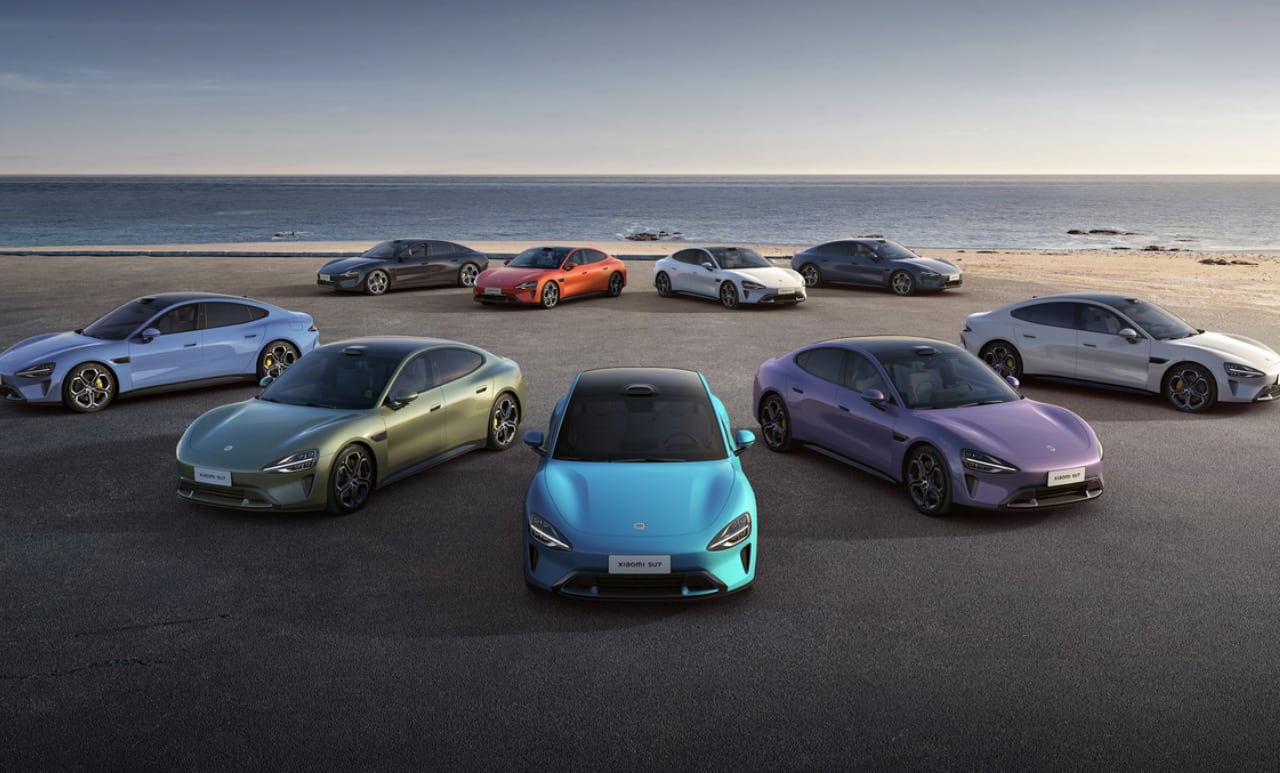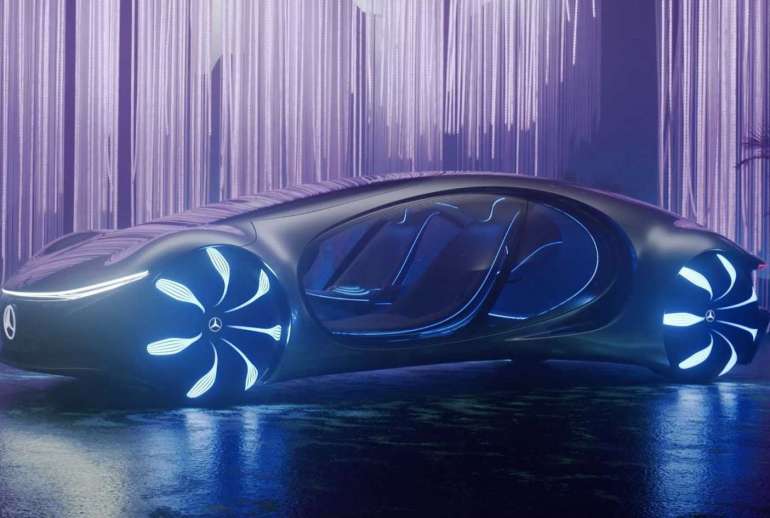Xiaomi’s SU7 is an electric vehicle that could significantly disrupt the American market, but for now, it remains out of reach. With its aggressive pricing, cutting-edge technology, and impressive performance, it has all the ingredients to challenge Tesla and legacy automakers alike. If the SU7 were available in the U.S., it wouldn’t just be another EV option—it could redefine what Americans expect from an electric car. However, trade policies, regulatory hurdles, and political tensions are keeping that from happening. So, what would life look like if Xiaomi’s electric vehicles were actually sold in the United States?
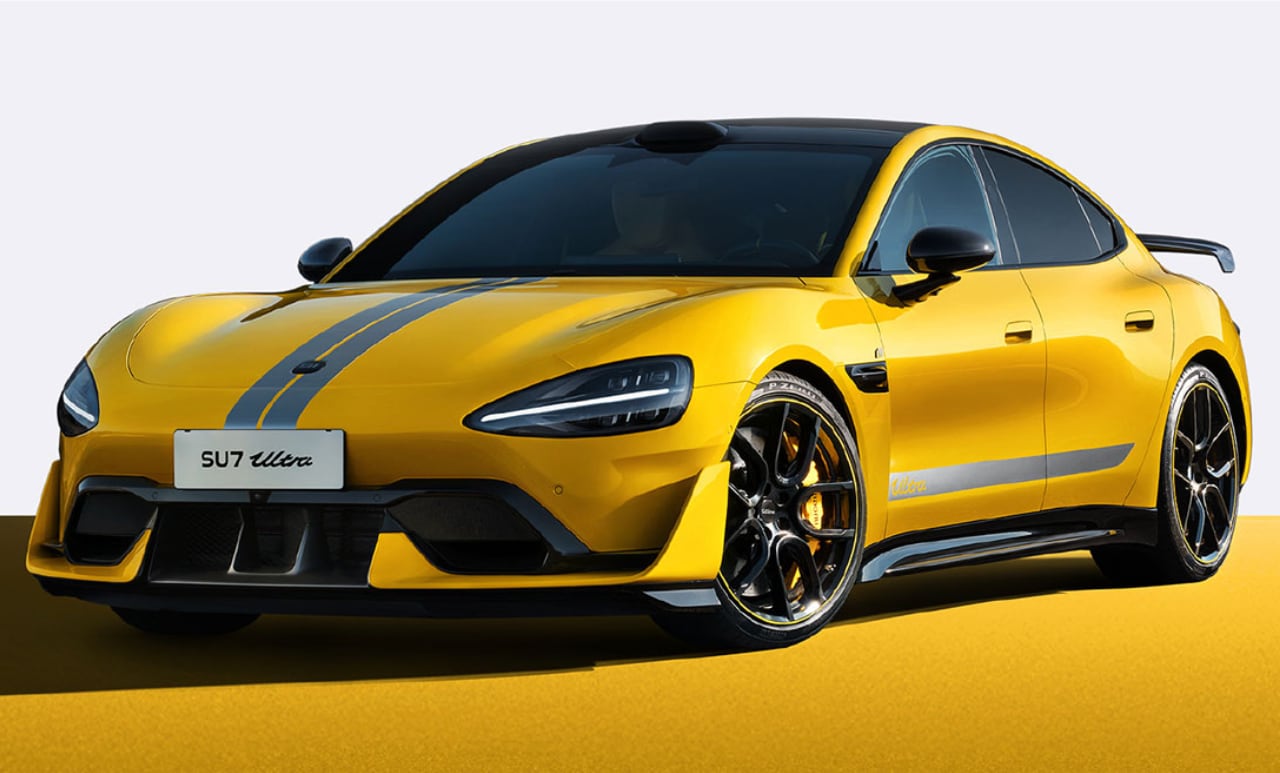
A New Era of Affordability
Xiaomi has built its reputation on delivering premium technology at aggressive price points, and the SU7 would be no exception. Priced at approximately $30,000 in China, it would instantly challenge Tesla’s Model 3, which starts nearly $4,000 higher. This kind of price disruption wouldn’t go unnoticed. It would push automakers—Tesla included—to rethink their pricing strategies, forcing the industry to make high-performance EVs more accessible.

The financial benefits wouldn’t stop at the initial purchase. Xiaomi’s cost-efficient manufacturing, combined with its experience in consumer electronics, suggests that replacement parts and repairs would also be more affordable. This could make premium EV ownership a realistic option for middle-class Americans who have long been priced out of the segment.
Aerodynamic and Lightweight Design
The SU7’s design plays a crucial role in its efficiency and performance. Its aerodynamic profile, with a low drag coefficient of 0.195, reduces air resistance, enhancing efficiency by minimizing energy loss due to drag. The use of lightweight materials such as aluminum and carbon fiber in its bodywork reduces the overall weight of the vehicle, improving power-to-weight ratio and increasing efficiency.
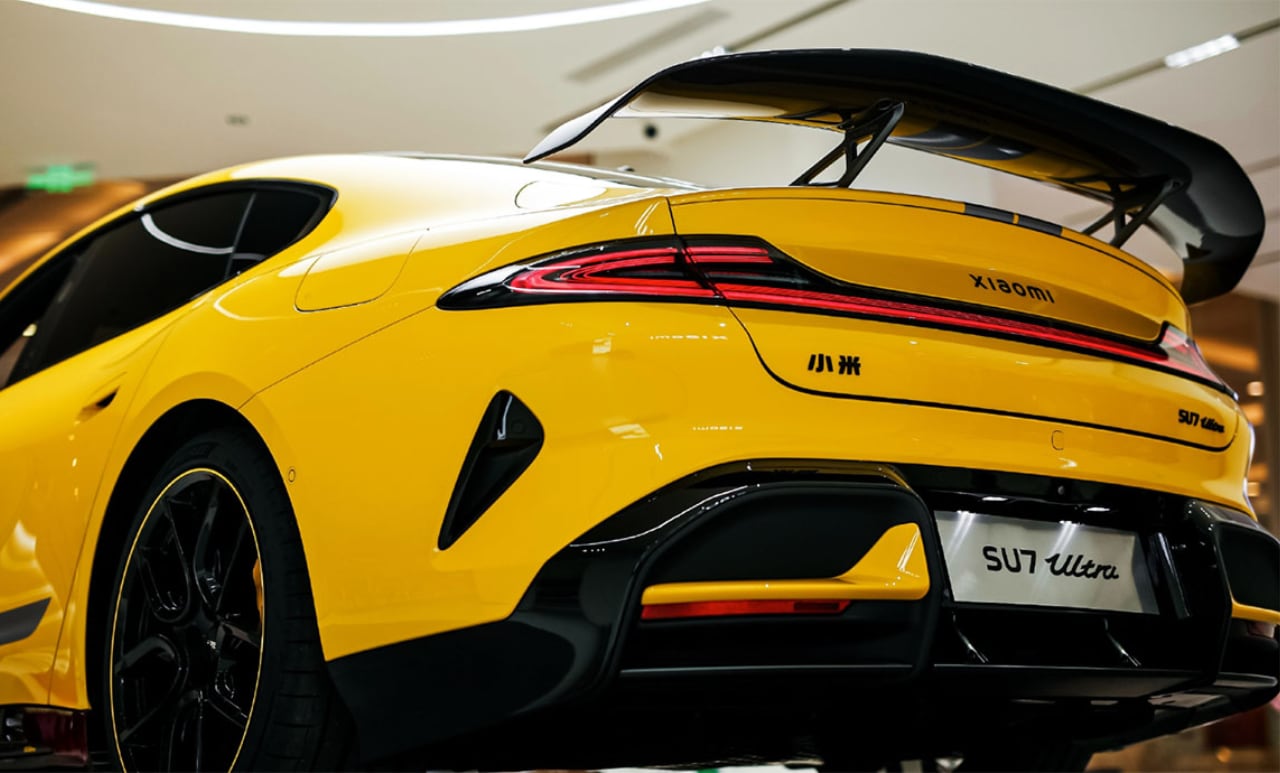
The exterior design also features an active shutter grille and a rear wing that adjusts to enhance stability at high speeds. Additionally, the SU7 includes advanced LED lighting systems and a panoramic glass roof, offering an expansive view and enhancing the sense of space within the vehicle.
Interior Design and Smart Features
Inside, the SU7 boasts a 16.1-inch infotainment display and a massive 56-inch head-up projection, providing a seamless user interface and a comprehensive view of vital information while driving. The interior is crafted with premium materials, including a tri-spoke D-shaped leather-wrapped steering wheel, enhancing the driving experience with a comfortable grip and stylish design.


The SU7 is powered by Xiaomi’s HyperOS, which offers seamless integration with smart devices. This includes features like smart home integration, allowing users to control their home’s thermostat, security cameras, and exterior lights from the vehicle. The SU7 also features a driver-assistance system, utilizing advanced technology to enhance safety and convenience.
A Smarter Driving Experience
Beyond its design, Xiaomi’s expertise in smart technology would bring a level of connectivity to EVs that most automakers struggle to match. The SU7 integrates with a user’s digital life, making it ideal for professionals on the go. Its tablet mounting system and fast network integration could turn the car into a fully functional mobile office, allowing users to stay productive while waiting for appointments or charging their vehicles.
Performance That Speaks to American Drivers
Xiaomi isn’t cutting corners when it comes to range or power. The base model’s 434-mile range would be enough to eliminate most range anxiety, while the high-performance Max version pushes even further with a staggering 497 miles on a single charge. That’s more than enough for long road trips without the need for constant recharging.
Then there’s the speed. The Max variant’s 2.78-second sprint to 60 mph puts it in the same performance bracket as some of the fastest luxury EVs on the road today. A dual-motor configuration delivering 664 horsepower ensures that American drivers wouldn’t have to sacrifice excitement for efficiency. Whether it’s for daily commuting or weekend getaways, the SU7 would fit right in with the way Americans use their cars.
Advanced Battery Technology and the 800V Advantage
The SU7’s battery technology is a key factor in its performance. It uses advanced batteries from suppliers like CATL, which provide high energy density and support ultra-fast charging. The vehicle’s Cell-to-Body (CTB) technology integrates the battery into the chassis, achieving a high volumetric efficiency that enhances overall vehicle efficiency and performance.
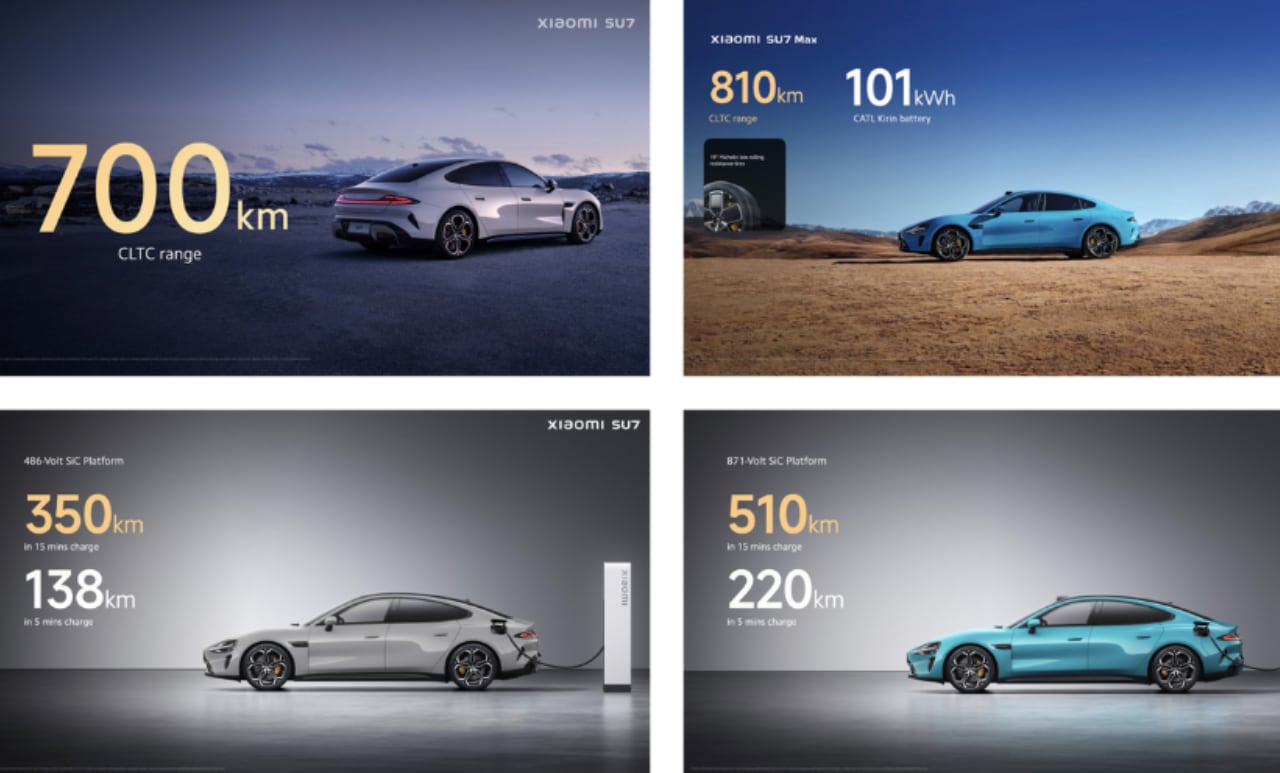
One of the SU7’s standout features is its 800V electrical architecture. This system allows for ultra-fast charging, adding significant range in just a few minutes. For example, the SU7 Max can regain up to 317 miles of range in 15 minutes. The 800V system also improves efficiency by reducing energy loss during charging and supports more powerful electric motors, enhancing the vehicle’s acceleration and responsiveness.
The Roadblocks to U.S. Entry
For now, Xiaomi’s ambitions in the U.S. remain stalled by regulatory and political challenges. In September 2024, the Biden administration imposed a 100% tariff on electric vehicles imported from China, effectively doubling the cost of cars like the SU7. This move was part of a broader strategy to protect U.S. industries from China’s state-driven industrial practices. Even if Xiaomi were willing to absorb some of that cost, compliance with Federal Motor Vehicle Safety Standards would require design modifications and a lengthy approval process.
Beyond regulations, geopolitical tensions between the U.S. and China add another layer of uncertainty. Even if Xiaomi found a way around tariffs—possibly through local assembly—long-term viability would still be in question. Without a clear path forward, the risk may outweigh the reward for Xiaomi, at least in the short term.
Rethinking the Service Model
Bringing the SU7 to the U.S. wouldn’t just require selling cars—it would mean building a service network from the ground up. Unlike Tesla, which started with direct sales and service centers, Xiaomi has no existing infrastructure to support American customers. Establishing dealerships, training technicians, and ensuring a steady parts supply would require significant investment.
However, Xiaomi’s experience with consumer electronics could offer a fresh approach. Over-the-air software updates and mobile service units could minimize the need for physical maintenance visits. If executed well, Xiaomi could disrupt not just EV pricing, but also how car servicing is handled. This would require a strategic partnership with existing service providers or a substantial investment in building out its own network.
What American Consumers Are Missing
The absence of Xiaomi’s SU7 leaves a noticeable gap in the market. A car that blends affordability, cutting-edge technology, and high performance would push the industry forward at a much faster pace. It would challenge American automakers to innovate at a speed that benefits consumers, lowering prices and expanding the reach of EV technology.
Industry leaders, including Ford’s CEO, have already acknowledged the capabilities of Chinese EV manufacturers. However, until trade policies shift and regulatory roadblocks are cleared, American consumers will have to watch from the sidelines as the global EV market moves ahead. The SU7 isn’t just another electric car—it’s a missed opportunity for progress in the U.S. auto industry.
While the SU7 offers a compelling vision for the future of electric vehicles, its entry into the U.S. market remains speculative. For Xiaomi to succeed, it would need to navigate complex regulatory and trade challenges while establishing a robust service network. If successful, the SU7 could not only change consumer expectations but also redefine how electric vehicles are priced, serviced, and integrated into daily life. With its advanced battery technology, 800V system, efficient design, and smart features, the SU7 is poised to offer a unique blend of efficiency, performance, and connectivity that could disrupt the status quo in the U.S. EV market.

